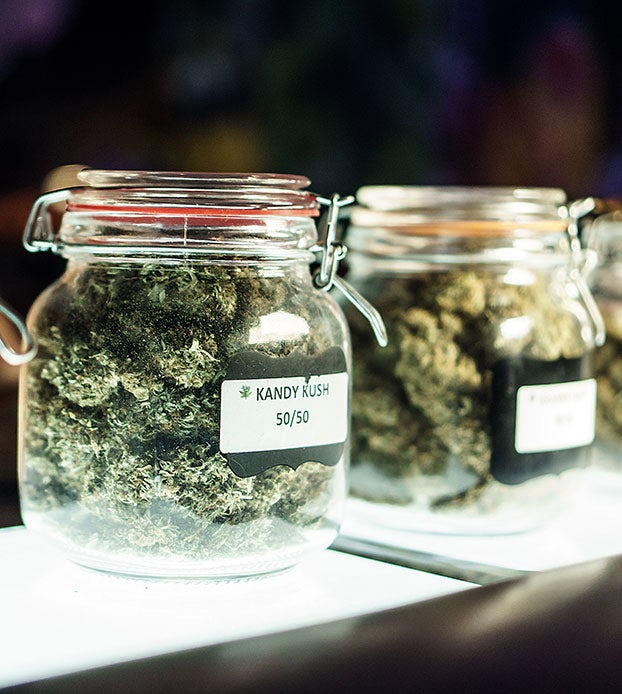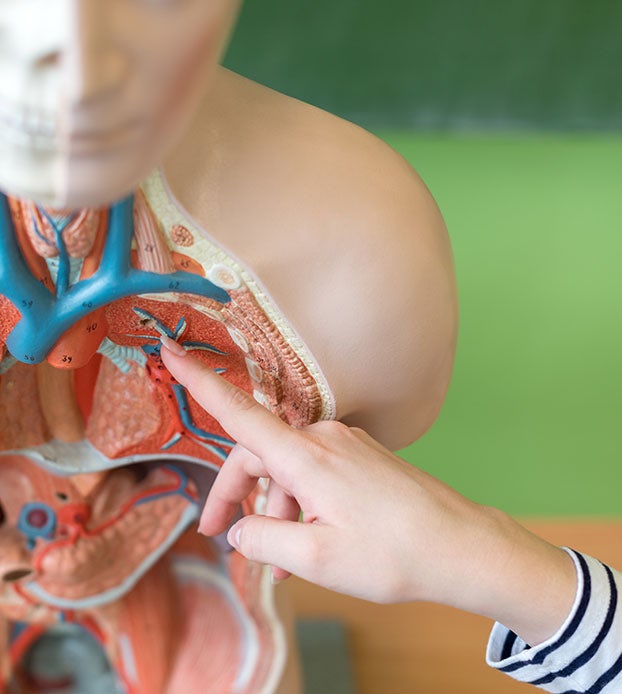If you’re a regular cannabis user, you may have noticed that over time, it takes more weed to get the results that you want. This build-up is known as tolerance, and it’s common in chronic cannabis users. But is it a problem?
Tolerance vs. dependence
There is often confusion between these two terms, so let’s clear it up. According to the American Psychiatric Association, tolerance is defined as “a condition, resulting from persistent use of a drug, characterized by a markedly diminished effect with regular use of the same dose of the drug or by a need to increase the dose markedly over time to achieve the same desired effect.” The definition goes on, “tolerance is one of the two prime indications of physical dependence on a drug, the other being a characteristic withdrawal syndrome.”
This translates to the individual deciding if more weed is needed to achieve the desired effects, whether for pain relief or a happy high. However, only abstinence can reveal any symptoms of withdrawal and therefore, dependence. While different, tolerance and dependence can be related, as higher tolerance can be an indicator of the potential for dependence.
This is your brain . . . on weed
Remember that infamous anti-drug ad from the 1980’s?
Fortunately, we’ve come a long way since then towards understanding how drugs affect the brain, along with decriminalization and legalization of cannabis. The research upholds this, and numerous studies explain what is really going on in the brain when it comes to tolerance levels. 1
The endocannabinoid system 101
The endocannabinoid system (ECS) is responsible for the homeostasis or balancing of all body systems. This system affects nearly all of the important body functions such as learning, memory, emotions, sleep, temperature, pain, sensation, muscle control, energy balance, mood, motivation/reward, stress, inflammation, immune responses, eating, and arousal. The ECS is better thought of as a cellular communication system rather than an traditional organ system, as it’s built into and intertwines with all of our other bodily systems like the lungs, intestines, muscles, and eyes. 2
The brain is heavily saturated with CB1 receptors, which are responsible for numerous important functions like memory and reward, as well as the intoxicating effects of THC. Over time and continuous exposure to THC, this is what happens with heavy use – CB1 receptors begin to “downregulate”, meaning they decrease their availability on the cell’s surface, thereby reducing its ability to receive certain chemical signals.
With less receptor activity, it takes an increasing amount of THC to achieve the same results. This is a consistent finding in numerous studies exploring the development of tolerance to THC, and this phenomenon is well established for many drugs. 3 4
The study Blunted Highs describes this desensitization of CB1 receptors, and concludes that receptor availability normalized following four weeks of abstinence. Study results are inconsistent, however, on how long it takes for CB1 receptors to reset in different subjects, suggesting anywhere from a few days to several weeks. 5
Tolerance breaks
Tolerance breaks (aka T-breaks) are intentional periods of abstinence from using cannabis. During a T-break, you stop consuming cannabis to allow CB1 receptors to return to previous levels of sensitivity.
If you’re a regular, multiple times per day Type I cannabis product user, you are likely developing tolerance to THC and may require increasing doses to achieve the same effects. Over time with very regular use, the doses of THC needed to achieve the same effects can get quite high, which can become costly, time consuming, or both.
The length of time for tolerance reset can vary between individuals and there is little evidence for the ideal T-break. For the medical cannabis user, even the idea of taking one day off can be daunting. A tolerance break, whether it is days or weeks, carries implications for your health, as your body has become accustomed to having cannabinoids like THC present.
Because of this, an abrupt stop of regular cannabis consumption can result in mild withdrawal symptoms. While unpleasant, cannabis withdrawal is not dangerous or life-threatening (unlike alcohol, benzodiazepines or opioids), and will typically resolve within a few days, with lingering effects for a few weeks depending on your use.
Tips for keeping tolerance low
Following a T-break, several strategies for slowing down future tolerance build-up include:
- Using a lower-strength THC product
- In the end, tolerance is related to dose. A simple way to reduce tolerance building but not feel like you’re cutting back is to consume a product with a lower percentage of THC. After a couple day tolerance break, it should be pretty easy to step down to a product with a more mild THC concentration.
- Decreasing the amount and frequency of consumption
- Tolerance is directly correlated with dose and frequency of any medication. Overstimulation, by either high doses or over a long period, leads to downregulation of receptors. Keeping dosing low, or only dosing THC at bedtime may be a good way to stave off significant tolerance. Wake and bake can be fun, but consuming high-THC products all day long is a sure-fire way to build tolerance quickly.
- Using a higher CBD to THC ratio product
- For example, 10mg CBD:5mg THC or a 2:1 ratio. CBD and THC can actually both bind to the CB1 receptors (in different ways), so adding CBD to your THC products means there’s competition for both cannabinoids to attach to the receptor. The more CBD you have, the less THC will bind, and you will notice a more moderate effect which results in building less tolerance.
- Taking frequent T-breaks
- It’s common for regular cannabis consumers to need at least a couple tolerance breaks each year. How often you need them is different for everyone and depends on your consumption habits and medical needs. The key to needing less tolerance breaks is to adjust the amount of THC and the frequency of consumption to less than you were using before your break.
- Using different strains (or cultivars) and dosage forms
- Cannabis users usually notice that mixing things up and switching between different products improves tolerance. We’re not exactly sure why, but it’s likely that the change in the chemical make-up (combination and concentration of cannabinoids, terpenes and flavonoids) works slightly differently, activating a less tolerant receptor in the body. Keeping your body guessing with new products, sometimes called strain rotation, may help keep tolerance lower.
Since the main function of the ECS is to maintain homeostasis or balance, nurturing the ECS with complementary therapies such as acupuncture and meditation can lower stress. Limited evidence is available to substantiate claims of mind/body modalities in the context of tolerance, but it makes sense that a healthy ECS would function more efficiently than an overstimulated ECS. Therefore, any complementary practice that reduces physical and mental stress would benefit the ECS receptors due to its intimate interactions with other body systems. In a nutshell, an optimal ECS = an optimal response. 6 7
Debunking tolerance myths
Contrary to popular belief, there is little to no evidence that the following methods work to decrease cannabis tolerance:
Mixing weed with tobacco
Nicotine is highly addictive and may contribute to cannabis dependence according to a study published in 2008. Both THC and nicotine exert effects on the body’s “reward” circuitry, another receptor system closely tied to the ECS. 8
Drinking excess water
THC is fat soluble, not water soluble, so it and its metabolites are stored in the fatty areas of the body. Therefore, drinking excess water will not “dilute” THC and reduce its effects. Additionally drinking excessive water does not substantially reduce the levels of THC in the body, but can help you pass a drug test. A THC detox is different from a T-break, meaning that attempting to decrease the amount of THC in your system (in anticipation of drug testing, for instance) will not necessarily decrease tolerance unless of course you’re abstaining during that time (which is recommended). 9
Vitamins, omega-3, teas, and alcohol
Despite anecdotal reports, vitamins (especially vitamin C), omega-3 supplements, teas or alcohol probably won’t decrease tolerance, though there is no scientific evidence to confirm this. There is evidence to say that when consumed together, alcohol increases overall levels of THC in the brain, and this increase in levels would result in feeling more high. However, this increase in THC levels in the brain would likely lead to building tolerance more rapidly over time. Additionally we do know that omega fatty acids are involved in endocannabinoid tone, but the science remains unclear on what this means for tolerance.
Bottom line
The good news is that most studies show that tolerance build-up is an issue for people defined as chronic (daily), long-term, high potency users – and that lowering frequency, potency and amount of weed can help reset the tolerance threshold for recreational users. For medical cannabis patients, who tend to have strict dosing regimens and following “start low, go slow” advice, tolerance may be less problematic.
Luckily, for anyone experiencing tolerance issues, the takeaway nugget is that weed tolerance is only a temporary state, and with a proper T-break, your ECS can rebound to baseline function rather quickly.
Sources
- Colizzi M, Bhattacharyya S. Cannabis use and the development of tolerance: a systematic review of human evidence. Neurosci Biobehav Rev. 2018;93:1-25. doi:10.1016/j.neubiorev.2018.07.014
- Haspula D, Clark MA. Cannabinoid Receptors: An Update on Cell Signaling, Pathophysiological Roles and Therapeutic Opportunities in Neurological, Cardiovascular, and Inflammatory Diseases. Int J Mol Sci. 2020;21(20):7693. Published 2020 Oct 17. doi:10.3390/ijms21207693
- Rodríguez de Fonseca F, Gorriti MA, Fernández-Ruiz JJ, Palomo T, Ramos JA. Downregulation of rat brain cannabinoid binding sites after chronic delta 9-tetrahydrocannabinol treatment. Pharmacol Biochem Behav. 1994;47(1):33-40. doi:10.1016/0091-3057(94)90108-2
- Loh HH, Tao PL, Smith AP. Role of receptor regulation in opioid tolerance mechanisms. Synapse. 1988;2(4):457-462. doi:10.1002/syn.890020414
- Ramaekers JG, Mason NL, Theunissen EL. Blunted highs: Pharmacodynamic and behavioral models of cannabis tolerance. Eur Neuropsychopharmacol. 2020;36:191-205. doi:10.1016/j.euroneuro.2020.01.006
- Hu B, Bai F, Xiong L, Wang Q. The endocannabinoid system, a novel and key participant in acupuncture’s multiple beneficial effects. Neurosci Biobehav Rev. 2017;77:340-357. doi:10.1016/j.neubiorev.2017.04.006
- McPartland JM, Guy GW, Di Marzo V. Care and feeding of the endocannabinoid system: a systematic review of potential clinical interventions that upregulate the endocannabinoid system. PLoS One. 2014;9(3):e89566. Published 2014 Mar 12. doi:10.1371/journal.pone.0089566
- Ream GL, Benoit E, Johnson BD, Dunlap E. Smoking tobacco along with marijuana increases symptoms of cannabis dependence. Drug Alcohol Depend. 2008;95(3):199-208. doi:10.1016/j.drugalcdep.2008.01.011
- Sharma P, Murthy P, Bharath MM. Chemistry, metabolism, and toxicology of cannabis: clinical implications. Iran J Psychiatry. 2012;7(4):149-156.
Sign up for bi-weekly updates, packed full of cannabis education, recipes, and tips. Your inbox will love it.

 Shop
Shop Support
Support


















